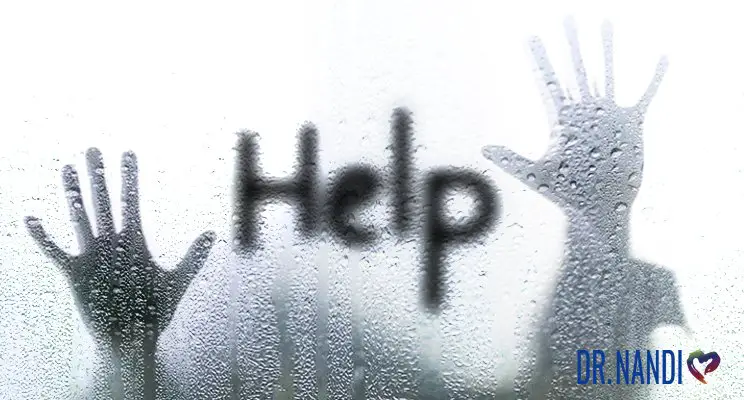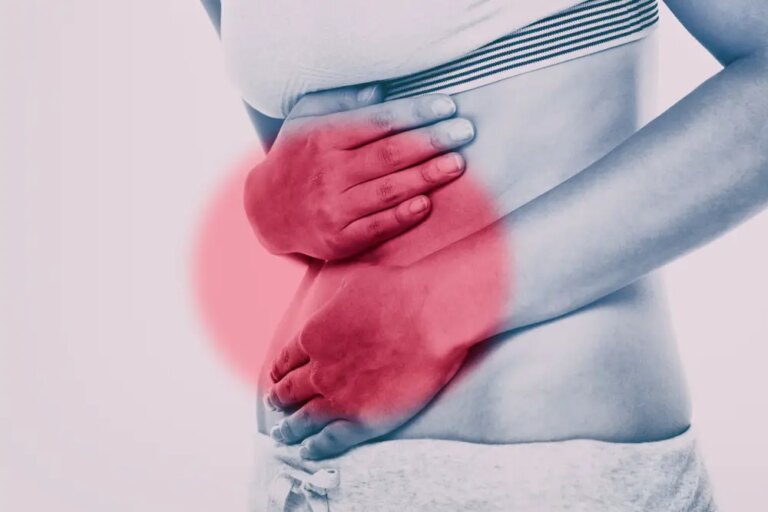Yes, it is true. Suicide is a severe concern that kills a person every 12 minutes in the United States alone. Often a result of depression, suicide doesn’t have to be a death sentence or even an option. Suicide is preventable, and mental health conditions associated with suicide, suicidal thoughts, or behaviors are treatable.
Suicide: What are the Facts
Suicide is the 10th leading cause of death in the United States, ending the life of 38,000 people each year. About 105 people die by suicide every single day. That’s one death every 12 minutes. These statistics do not include unsuccessful attempts or suicide contemplation. There is 1 suicide for about 25 suicide attempts leaving a quarter million American suicide survivors per year. Numbers are higher in the elderly, with one death per 4 attempts.
Suicide affects everyone, but some are at higher risk.
Suicide is higher among Caucasians, American Indians, and Alaskan Natives. Suicide is also 4 times higher among males and tends to be more successful.
1 in 100,000 children ages 10 to 14, 7 in 100,000 youth 15 to 19, and 12.7 in 100,000 young adults 20 – 24 die from suicide every year. If you are between 18 and 29, you’re more likely to have suicidal thoughts and try to kill yourself than people older than 30. Suicide rates for men are higher above 50 and for women between 45 and 54. Widowed and divorced individuals are at a higher risk.
Though females are twice as likely to go through depression and have suicidal thoughts, males are more likely to act upon those thoughts. Males are more likely to use firearms, whereas females tend to use poisoning as their method.
Lesbian, gay, and bisexual children are 3 times more likely to turn to suicide than straight peers. Transgender individuals are at even higher risk. 41%of them have attempted suicide. LGBT suicides are often related to rejection from their families or physical assault. LGBT individuals of color are at an even higher risk than whites.
Depression affects 20-25 percent of Americans over 18. Only about 50 percent of people with depression receive treatment; however, 80-90% of those who seek treatment get better through therapy or medication. (1, 2)
Suicide Risk Factors
- Family history of suicide
- History of depression or other mental health issues
- History of alcohol and other substance abuse
- Sexual abuse
- Previous suicide attempt(s)
- Aggressive or impulsive tendencies
- Feelings of hopelessness
- Cultural or religious beliefs, including believing that suicide is a noble solution to a personal problem
- A recent loss (loved one, relationship, pet, job, financial, etc.)
- Physical illness
- Local suicide epidemics
- Isolation
- Lack of access to treatment or unwillingness to seek treatment
- Easy access to lethal methods
- The stigma associated with asking for help or having mental health issues (3)
Suicide Warning Signs
- Talking about suicide, death, and dying
- Looking for ways to kill oneself
- Talking about hopelessness, helplessness, having no purpose, feeling pain, or being in pain
- Talking about being a burden to others
- Depression
- Mood swings
- Personality changes
- Being anxious or agitated
- Participating in risk-taking and reckless behavior
- Being or feeling isolated, withdrawing from people and activities
- Sleeping too little or too much
- Using increasing amounts of alcohol or drugs
- Giving away possessions
- Lack of interest in plans
- Talking about revenge (4, 5, 6)
Mental Illness and Suicide
There is no single mental illness that contributes to suicide. Mental illness is not a death sentence, and in many cases, it doesn’t result in suicide. Receiving appropriate treatment can lower risks and help improve mental health conditions. Suicide usually happens as a result of multiple factors. Having more than one mental illness can increase one’s risk. The following mental health conditions can increase one’s risk of suicide (6, 7, 8):
- Depression
- Bipolar disorder
- PTSD
- Schizophrenia
- Borderline personality disorder
- Substance use disorders
Suicide Prevention
Suicide is a complex public health issue. Suicide prevention requires cooperation and coordination among various parties, including individuals, families, treatment services, healthcare providers, and other critical stakeholders.
Essential factors for suicide prevention include (9):
- Seeking help for oneself or someone else
- Availability of appropriate diagnosis, treatment, and care for those with mental illness or otherwise at risk
- Appropriate media reporting
- Removing access to means of suicide
- Removing the stigma of mental illness and suicide
Protective methods for suicide prevention(3):
- Easy access to a large variety of clinical interventions and support to those in need and seeking help
- Connectedness and support from family and the community
- Effective clinical care for those with mental, physical, and substance use disorders and otherwise at risk or in need
- Support from ongoing medical and mental health care professionals and teams
- Having or learning skills of conflict resolution, problem-solving, and other non-violent means of communication and handling problems.
- Cultural and religious beliefs that support self-preservation and discourage suicide
Suicide Treatment
Effective treatment depends on the individual’s risk factors, circumstances, and mental health issues. Most people who die from suicide have had a present mental illness, making mental health care crucial in dealing with suicide.
Emergency Room: In an emergency, don’t hesitate to dial 911 immediately to receive immediate attention.
Primary Care Doctor: 75 percent of those who have attempted suicide have seen their primary care doctor is leading up to their death. Many haven’t seen any other health professionals besides their GP. It is essential to be honest and open with your primary care physician. They can direct you to appropriate help.
Inpatient treatment: An inpatient program may be required or highly beneficial for those at serious risk of suicide and severe mental illness. Inpatient programs usually include various individual and group therapies and care from a mental and physical health practitioner team. Partial inpatient and intensive outpatient programs may be options instead of transitioning out of an inpatient setting.Medication: Antidepressants, anti-anxiety drugs, and antipsychotic medicines can help reduce the symptoms of specific mental illnesses and reduce the risk of suicide. Those taking medications should always follow directions and be closely monitored by doctors. Drugs are usually used along with therapy.
Therapy: Various forms of treatment may be effective for those with mental illness or at risk of suicide.
- Psychotherapy, an intensive form of talk therapy, is often prescribed to those with depression.
- Cognitive-behavioral therapy (CBT) examines the relationship between thoughts, feelings, and behavior, teaching coping skills and changing thought patterns. CBT is often effective for those with mood disorders, anxiety, eating disorders, and substance use disorders.
- Dialectical-Behavior Therapy (DBT) is similar to CBT but brings mindfulness into the therapy by focusing on acceptance, creating balance, and creating positive change. It is particularly effective for borderline personality disorder (BPD) but used for other mental health issues, including eating disorders and mood disorders. It is beneficial for those with chronic suicidal thinking.
Additional Therapies and Alternative Methods
Art therapy, music therapy, and other expressive therapies can also help those with mental illness and those at risk of suicide. Alongside traditional therapy and medication, alternative therapy methods and practices can benefit those with mental illness. Craniosacral therapy, somatic experiencing, Somatic Emotional Release, Emotional Freedom Technique (EFT), Movement Desensitization and Reprocessing (EMDR), acupuncture, mindfulness, massage, tai-chi, and yoga can all be complementary methods to therapy and medication. These can be helpful in the prevention and maintenance phase. Nutritional and lifestyle changes, journaling, relaxation techniques, meditation, yoga, stress reduction, simplifying one’s life, joining a support group, discovering one’s passions, and avoiding isolation can help recovery after a suicide attempt.
Follow Up and Community Care
It is essential to follow the treatment program carefully, use skills learned in therapy, take medication as prescribed if needed, seek more support when necessary, and utilize alternative methods as helpful to prevent future suicide attempts. Continuous follow-up with one’s treatment team (both mental and physical) and being connected to a supportive community are essential for ongoing recovery and continuous suicide prevention.
With proper care, treatment and support, suicide is preventable, and those with mental illness or at risk of suicide can lower their symptoms and risks and start living a healthy, fulfilling life. (5, 9, 10, 11,12, 13, 14, 15, 16, 17, 18, 19, 20)
Hotlines and Resources
- National Suicide Prevention Hotline: 1-800-273-TALK (8255)
- Veterans Crisis Line: 1-800-273-TALK (8255) and press ‘1’
- LGBT Crisis Hotline and Chat: 1 – 866-488-7386 https://www.thetrevorproject.org/get-help-now/#trevorChat
- Substance Abuse and Mental Health Services Administration (SAMHSA) National Helpline: 1-800-662-HELP (4357)
- I am Alive. Phone and Chatline: 1-800-SUICIDE (784-2433) https://www.imalive.org/
- Psychologist Locator: https://locator.apa.org/
- Therapy locator: https://www.goodtherapy.org/
- 7 Cups of Tea online support: https://www.7cups.com
- Online counseling: https://www.betterhelp.com
FAQs:
Can the suicide hotline track you?
No. Your call is anonymous.
Can suicide be prevented?
Yes. I’ve explained this in more detail in the section above. The combination of available and appropriate mental and physical health care, family and community support, removing means, media reporting, and eliminating stigma play a role in prevention.
Can suicide be hereditary?
There may be a genetic link to suicide. Mental illness can be hereditary and increase the risk of suicide. (21)
Can suicide be contagious?
Suicide is not contagious like the flu. You can’t catch it by sitting next to someone suicidal. However, living in a family or environment where exposure to suicide, suicidal behavior, or suicidal idealization can increase one’s risk. (22)
Are suicide rates increasing?
Yes, after a period of decline, suicide rates have increased 125 percent in recent years. (23)
Conclusion
As you can see, suicide is a serious issue, but it is preventable, and treatment is available. You or your loved ones don’t have to suffer. Reach out for help, find the proper treatment, and start living a healthy and fulfilling life again.
Did you find this article helpful? Comment below; I would love to hear your thoughts, feedback, and questions.
References:
-
- https://save.org/about-suicide/suicide-facts/
- https://www.cdc.gov/violenceprevention/suicide/statistics/index.html
- https://www.cdc.gov/violenceprevention/suicide/riskprotectivefactors.html
- https://save.org/about-suicide/warning-signs-risk-factors-protective-factors/
- http://www.mentalhealthamerica.net/suicide
- https://www.nami.org/learn-more/mental-health-conditions/related-conditions/suicide
- https://suicideprevention.ca/the-relationship-between-suicide-and-mental-health/
- https://save.org/about-suicide/mental-illness-and-suicide/
- https://save.org/about-suicide/preventing-suicide/
- https://save.org/about-suicide/treatment/
- https://www.ncbi.nlm.nih.gov/pubmed/25752248
- https://www.webmd.com/vitamins/condition-1143/depression
- https://onlinelibrary.wiley.com/doi/abs/10.1111/j.1753-4887.1997.tb06468.x
- https://www.ncbi.nlm.nih.gov/pmc/articles/PMC2738337/
- https://www.webmd.com/depression/guide/diet-recovery#1
- https://www.health.harvard.edu/blog/diet-and-depression-2018022213309
- https://www.sciencedirect.com/science/article/pii/S0165032717307048
- https://www.sciencedirect.com/science/article/pii/S0165178117301981
- https://www.mayoclinic.org/diseases-conditions/depression/in-depth/depression-and-exercise/art-20046495
- https://www.mayoclinic.org/diseases-conditions/depression/diagnosis-treatment/drc-20356013
- https://www.sciencedaily.com/releases/2011/10/111007113941.htm
- https://academic.oup.com/aje/article/154/2/120/80422
- https://www.npr.org/sections/health-shots/2016/04/22/474888854/suicide-rates-climb-in-u-s-especially-among-adolescent-girls




















